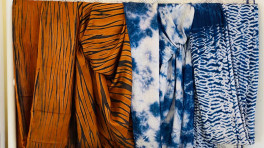The ancient Bihars of Naogaon
To our younger generation, it may sound surprising that thousand years ago we had universities where students from abroad came to study and research

Our plan was to visit five Bihars (ancient universities) in North Bengal's Naogaon, which is archaeologically the richest district of Bangladesh.
To our younger generation it may sound surprising that thousand years ago we had universities where students from abroad came to study and research. Written evidence shows that renowned monks from Tibet and Kashmir visited these Bihars, some of them even taught while visiting.
We started our journey from Rajshahi with local historians and my mother, who is from Naogaon, and had always been very enthusiastic about local history. From Dhaka, you can directly reach Naogaon by bus or you can take the plane to Rajshahi and then reach Naogaon by road.
Agra-Digun Bihar
The first Bihar we visited was Agra-Digun, which is in Dhamoirhat upazila, 15 kilometers from Naogaon. This Bihar was mentioned as Agrapuri Bihar in Tibetan history books.
The thousand-year-old structure looks like a small hill from distance. When we reached the top, we noticed that a few rooms were excavated long ago and in one corner, there laid a huge pile of broken bricks.
Jogoddol Mahabihar

The Jogoddol Mahabihar (a complex of Bihars) is also in Dhamoirhat Upazila and the ruins we saw were at least 800 years old.
According to history, this Bihar used to look like a lotus flower from above so it was also known as Padma Mahabihar.
Here we saw stones attached with metal, which is perhaps one of the earliest evidence of using metal in any Bihar.
King Rampal of the Pala dynasty founded his capital Ramabati after conquering this land where he later constructed the Jogoddol Mahabihar. After its discovery in 1923, this ruin was declared a protected property.
Holud Bihar

This Bihar is in Badalgacchi upazila. We reached Bilasbari union, which is 14 kilometres from Badalgacchi and by the bazaar is an ancient brick stair that reaches the Bihar. The Buddha statues on the walls prove that it was indeed a Buddhist Bihar.
Botgohali Zain Bihar
Among all the five ancient Bihars, the oldest is probably the Botgohali Zain Bihar, which is just three kilometres from Paharpur Bihar. This is also the only Zain Bihar discovered in Bangladesh.
The locals informed us that the entire area needs to be excavated by because even now, wherever they dig the soil, broken bricks come out. One old man said that it takes an entire day to dig a grave.
However, the villagers barely understand the historical significance of this place, in fact, they are rather annoyed because of the soil which makes it difficult for them to cultivate crops.
Paharpur or Sompur Bihar

The Sompur Bihar is the most renowned and also the grandest among all the Bihars. When Buchanon Hamilton made his survey around 1812 in East India, he saw the Bihar which looked like a pahar or hill. From there came the name, Paharpur Bihar.
There are nearly 200 rooms in this Bihar and Atish Dipankar, one of the most renowned Pundits of that era was Chancellor of this Bihar for a certain period. In 1985, it was declared a UNESCO World Heritage Site.
The terracotta designs around the central architecture are stunning along with many animals, mythical stories and religious figures drawn on the walls. Most of them have been ruined but some of the intact ones are preserved in the nearby museum.
It will take some time to visit the entire place and regular picnic parties make it hard to have a quiet time. However, there is a government rest house inside the compound, and if you can reserve it through the Archaeological department, you can spend a wonderful night and an equally peaceful early morning by exploring the mysterious Bihar yourself.


 Keep updated, follow The Business Standard's Google news channel
Keep updated, follow The Business Standard's Google news channel
















